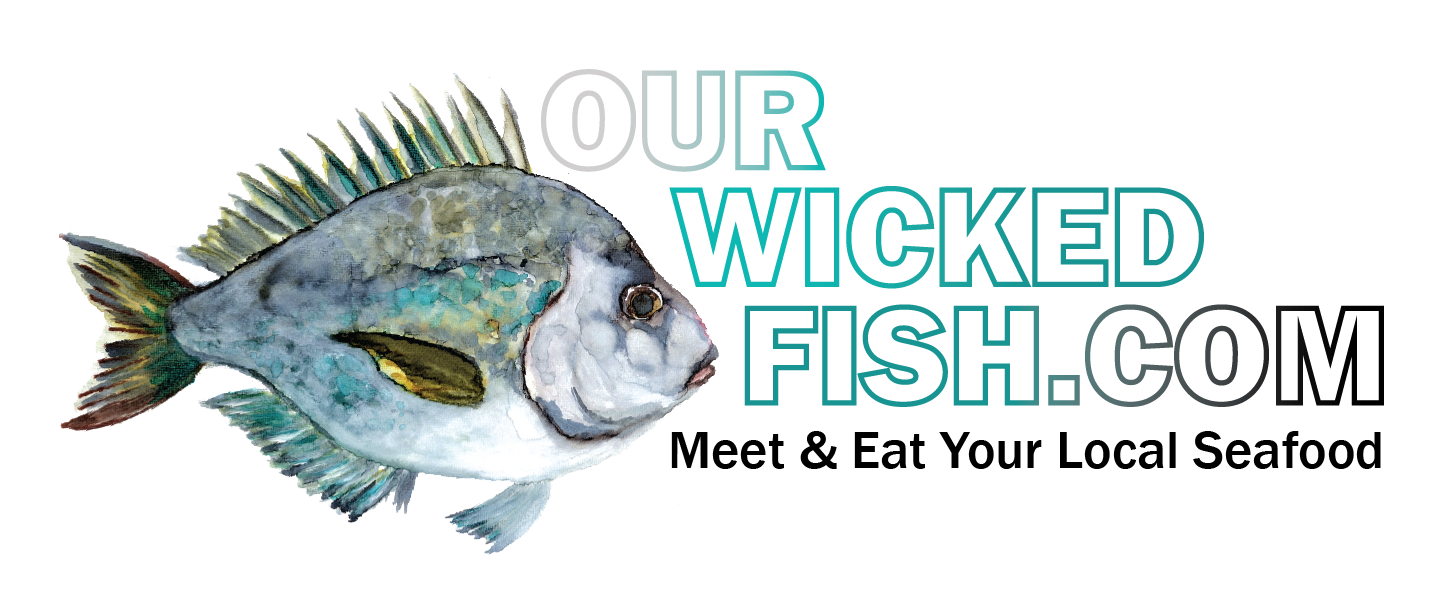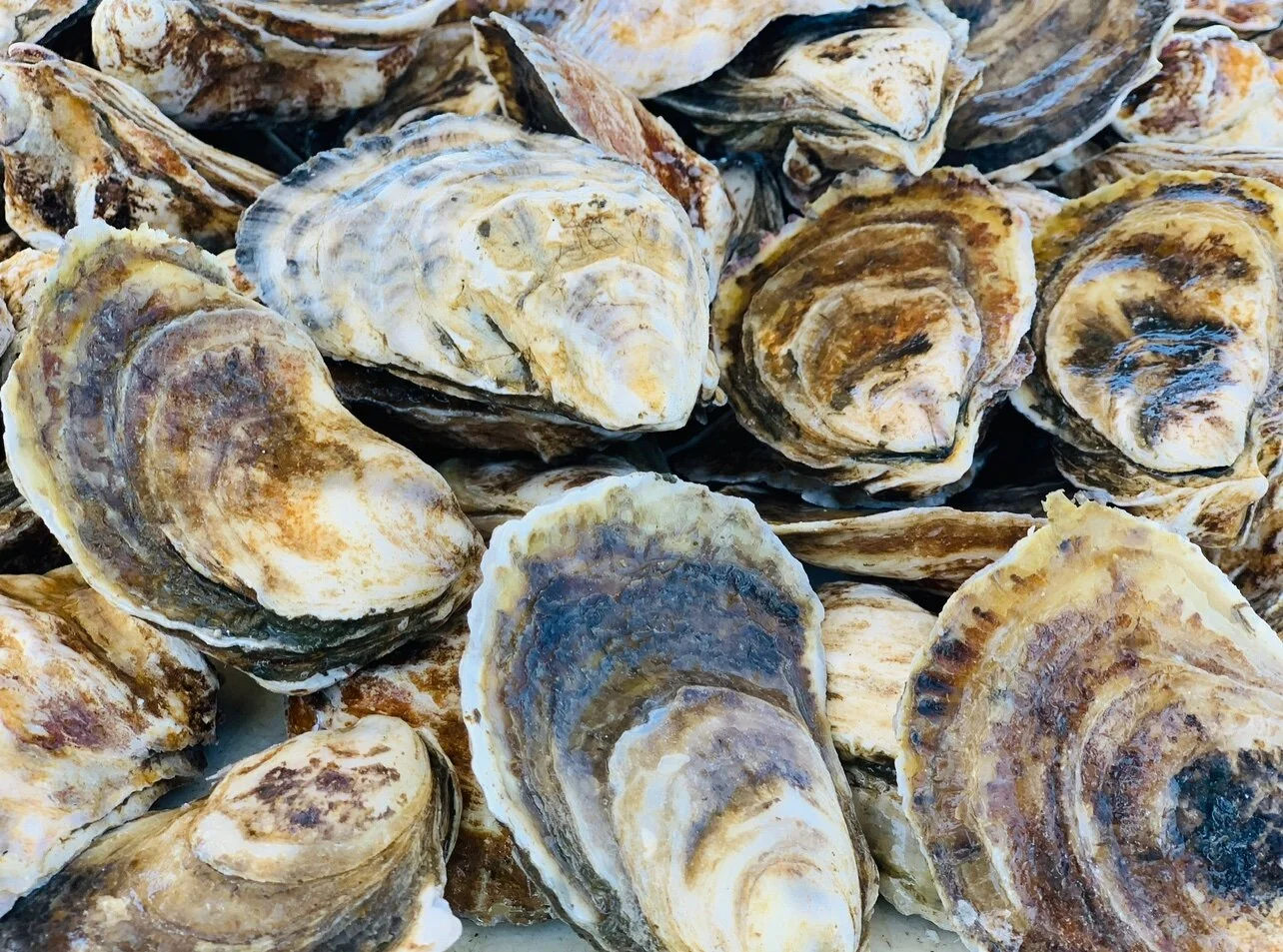Julia and Ryan Smith: Farmers of Katama Bay in Martha’s Vineyard
By Phoebe Gelbard
Before the COVID-19 pandemic, restaurant customers were throwing back halfshells across the U.S. Oyster farmers embraced the growing demand for the mighty bivalves that help clean coastal waters even though they take over three years of constant attention to grow to market size. But when the pandemic began, oyster farmers were one of the most impacted groups in Massachusetts’ food industry due to the fact that the majority of their product is purchased by restaurants.
Ryan and Julia Smith are the owners of Signature Oyster Farm, located in Katama Bay on Martha’s Vineyard, and they are among those whose livelihoods were crushed by the pandemic as a result of widespread supply chain disruption. But despite the challenges they have faced during the last year, their generosity and investment in the local community has been unwavering.
How to support Ryan and Julia Smith - Signature Oysters
Shop Their Website & Join Their Email List: https://www.signatureoysterfarm.com/
Instagram: @signatureoysterfarm
Facebook: https://www.facebook.com/signatureoysterfarm
Converging Paths
Having grown up on Martha’s Vineyard, Ryan has been around the ocean for as long as he can remember. Ryan’s father was a year-round commercial fisherman, and each season centered around a different fishery. “When we were younger, my dad would go out cod fishing, scalloping, sea bass, and conch fishing,” Ryan recalls. “We ate lots of fish for dinner.” Ryan’s upbringing on the water with his father set him on his current path, and he notes simply, “I would not be out here on the ocean if it weren’t for my dad. I grew up in that lifestyle and know what it's like to have to live off of the ocean.”
Julia’s family moved to Martha’s Vineyard from Florida while she was in high school. When she met Ryan, who was earning a degree in Business Marketing and working with his father at the time, Julia began to see what fishing as a career looked like. “Ryan knew that he was going to live and work on Martha's Vineyard – it’s where he wanted to be, and it’s what he loves to do,” says Julia.
Opportunities for Growth
When Ryan graduated from college, a handful of oyster farms on Martha’s Vineyard were available for farming. Ryan acquired his first oyster farm in 2006 and convinced his father to do the same. At that point in time, there were only three other oyster farmers on Martha’s Vineyard. Julia, Ryan, and his father settled into oyster farming without looking back.
Julia took care of their three children and help out on Ryan and his father’s farms as needed. When Ryan’s father retired a few years ago, Julia took over his space. Then, Ryan and Julia’s farms together became Signature Oyster Farm of Katama Bay. Their timing of acquiring farm space is crucial to their story because the process of acquiring the space and resources to farm oysters is not as straightforward anymore. “We’re thankful that Ryan and I each have our own farm. There’s a very long list to get one these days,” Julia explains.
Signature Oyster Farm has helped revive Katama Bay. It is important to note that Katama Bay, now home to a dozen oyster farms, was once a docking point for yachts and other large boats. What was once an area largely devoid of marine life and lacking in biodiversity has rebounded drastically with the presence of mariculture operations. “It was basically a dead zone,” says Juila. “Now, with all of the farms out there, it has its own ecosystem. There’s eelgrass and huge striped bass. It has brought life back into Katama Bay.”
Want to know how oysters revive dead zones? Julia and Ryan explain that a single oyster can filter up to fifty gallons of water a day, gleaning both nutrients and pollutants from its surroundings. The restorative benefits of oyster populations are widely known; fortunately, many municipalities are supporting the power of the oyster. The Billion Oyster Project, for example, is restoring the health and biodiversity of the New York Harbor by working with volunteers, students, and restaurants within the community to seed one billion oysters by the year 2035. But back to Katama Bay!
A Day in the Life
Although growing your own oysters and being able to have control over how you farm may seem like the sweet life, it can be incredibly challenging. Not only does Ryan work year-round to keep their farming operation in motion, but he and his small crew works seven days a week to do so. Aside from constant maintenance projects, oysters have to be harvested and distributed to buyers when they are the ideal size. Together, the crew heads out on small boats to the cages in which the oysters grow, then they count and grade them by size. The ones that are ready to be sold go into what Ryan calls “the bank,” which they draw from when an order needs to be filled. “We have to stay ahead of the game because if you don't have the oysters ready to go when somebody wants them, you can miss out on a sale,” Ryan explains.
This almost constant turnover of product means that there are oysters in varying stages of life at any given time. “Everything happens at once,” says Ryan. “They’re all growing, so you have to take care of three different year classes: you take care of your babies, then your oysters that are two years old, and then the three year old ones which are the oysters you're trying to sell.” In the wintertime, they stop growing; this gives Ryan time to pick through his inventory to find the ones that are misshapen, which are then donated to the town for recreational shellfishing. Rarely, if ever, is there a moment when there aren’t bivalves to be attended to.
Apples to Oysters
In order to paint a more relatable picture of oyster farming, Ryan compares it to gardening. “It’s really similar,” he says. “For anyone who has ever tried to have a garden, it can be a nightmare. You can put in all the work in the first month, then if you neglect it, the weeds just take over and you have nothing to show for it.” Oyster farming, which is considered a type of mariculture, can become the same type of nightmare when not diligently maintained. Ryan explains that in the ocean, they encounter equivalents of the relentless, fast-growing weeds we find in our gardens – “it’s just a different set of annoying things like jingle shells, barnacles, mussels, a variety of sponges.”
Ryan adds that one of his family members owns Clarkdale Fruit Farms in Deerfield, Massachusetts, and while they run vastly different operations, the big-picture challenges that they run into are fundamentally the same. “One year they’ll get hit with hail and lose all of their peaches. Or they'll get a weird disease that wipes out half the crop. The similarity of the obstacles we both face, it’s not even funny,” Ryan says with a bit of a laugh. By land or by sea, the sweat, tears, anguish, and gratification of growing food is not something always well-understood or valued by those who don’t spend their days out in the fields or on the water.
With that in mind, Ryan and Julia would love to see consumers increase their awareness of how their purchase impacts food providers. “I think it's really important for people to ask where their food is coming from,” Ryan adds. He and Julia suggest “getting the word out there” through consumer education. “Local seafood isn’t just about supporting the local farmer; it supports everyone up and down the chain. It's supporting delivery drivers and crew members, our waterways and ecosystems,” says Julia.
Too Much of a Good Thing
When many restaurants closed their doors in early 2020 with the onset of the pandemic, this scaling back of the food service industry sent uncertainty rippling through the New England seafood industry. The flow of product from boats to restaurants and markets came to a grinding halt at the start of the pandemic, and it became a nightmare for Ryan and Julia to try to sell their catch. They, along with their fellow oyster farmers, were left with an overwhelming abundance of product with no buyers in sight. “We weren’t selling oysters when we absolutely had to – not only just to make money, but to free up space for the smaller oysters,” Ryan laments. “That made it extremely difficult. We were scrambling to figure out our next step because we had so many oysters to get rid of. At one point, I wasn’t sure what we were going to do.”
Large buyers from the Boston area were hopeful that business-as-usual would continue within a few weeks, but the flooded market dragged on for many months. “You couldn't have predicted it would have lasted as long as it did,” adds Ryan. While Signature Oyster Farm is a licensed wholesale dealer that can sell directly to local customers, the demand had scaled back so significantly that they had to throw thousands of pounds (and dollars’ worth) of oysters back into the ocean for recreational harvest in order to free up commercial space. Ryan and Julia also donated a large quantity to the local school where they were fried for oyster po’ boys that were served through the drive-through lunch program.
Farming into the Future
When they realized that one of the most prominent obstacles to home delivery-scale distribution was the fact that many customers didn’t know how to shuck their oysters, Ryan and Julia made a point of walking customers through the process. While they see promise through a recent grant to expand their farming operation to include growing bay scallops, the uncertainty of the future has made it difficult for Ryan and Julia to make decisions surrounding the trajectory of their business.
How to support Ryan and Julia Smith - Signature Oysters
Shop Their Website & Join Their Email List: https://www.signatureoysterfarm.com/
Instagram: @signatureoysterfarm
A Note From The Author
Thank you to Ryan and Julia of Signature Oyster Farms for providing insight into the ups, downs, ins, and outs of what your livelihood has entailed, throughout the challenges presented by the last year and into what is hopefully a brighter future.










